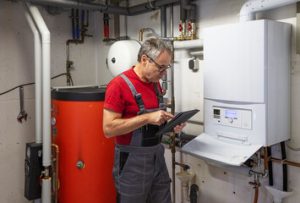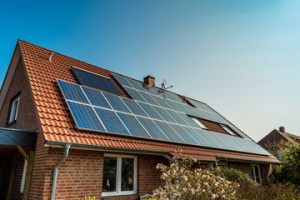Plumbers install, repair, and maintain the pipes and fixtures that carry water and sewage throughout buildings. They also diagnose issues such as leaks, clogs, and pressure fluctuations.
This skilled trade requires strong tool knowledge, physical fitness, and customer service skills. Many plumbers work as independent contractors or run their own plumbing businesses. Visit https://www.castlerockplumbingllc.com/ to learn more.
Residential

Residential plumbing is all about the pipes and fixtures that bring fresh water into homes and remove wastewater, including everything from kitchen sinks to toilets and outdoor spigots. This system is essential to our daily lives, but it’s often underappreciated until something goes wrong. That’s when you need a skilled, reliable plumber to help.
The job of a residential plumber is varied and involves working on both new construction and existing homes. This can include installing and repairing pipes, fixtures, and appliances. It also involves ensuring that all water-related systems are up to code and functioning properly. A good residential plumber can provide valuable advice during home renovation projects and assist with the design of a home’s plumbing framework. They can even help with the selection of water-saving appliances and fixtures.
In addition to installing and repairing residential plumbing, some plumbers specialize in specific types of plumbing work. For example, some may only work on gas lines while others are certified to work on drains and sewers. This specialization can make them more knowledgeable and qualified to handle certain issues. It can also give them a competitive advantage over other plumbers in the area.
A residential plumber must have a high school diploma or equivalent and undergo extensive on-the-job training to become licensed. This typically takes about 4-5 years and includes classroom instruction, hands-on learning, and testing. Once they’ve met all the requirements, a residential plumber can install and repair a variety of different plumbing fixtures and systems.
Another important aspect of a residential plumber’s job is building trust with their clients. This is especially critical in emergency situations when a client needs immediate assistance. Because of this, a good residential plumber should always strive to form strong relationships with their customers and provide excellent customer service.
When looking for a residential plumber, you should consider their experience, licensing, and customer service. It’s also a good idea to ask for references from past clients. This will give you an idea of the type of work they’ve done in the past and whether they’re a good fit for your project.
Commercial
Plumbing systems in commercial properties are often larger and more complex than those found in residential buildings. These systems serve many more people throughout the day, so they must be built to withstand much higher levels of usage. Additionally, commercial plumbing often involves installing and repairing gas lines as well as water heaters.
One of the most important things to look for when selecting a commercial plumber is their level of experience. A highly experienced commercial plumber is likely to have encountered many of the same issues that you may be dealing with, so they can offer quick and efficient solutions. This can save you both time and money in the long run.
Another factor to consider when choosing a commercial plumber is their reputation. Ask for references from past clients and take the time to review online reviews. This can help you find a plumber who will offer the highest quality of service at the best price.
A third thing to consider when choosing a commercial plumber is whether or not they offer upfront pricing. Some plumbers will quote a flat rate for their services, while others will charge by the hour and include the cost of parts in their initial estimate. Be sure to clarify this with your plumber before hiring them to avoid any surprises down the road.
Commercial plumbers are qualified to work on a wide range of commercial plumbing systems, including large office buildings, shopping centers, schools and hospitals, and industrial plants. They are trained to install and repair all types of plumbing fixtures, including toilets, faucets, drains, water heaters, and more. They also have the skills and knowledge to work on more complex plumbing systems, such as those that connect to fire sprinklers or industrial equipment.
Commercial plumbing maintenance is critical to the smooth operation of any business. Regular inspections can identify and address small problems before they become major disruptions, preventing costly downtime and helping to keep businesses up and running. In addition to routine maintenance, commercial plumbers can also help businesses manage their plumbing costs by offering service agreements or monthly billing plans.
Industrial
As the name suggests, industrial plumbing is an area of specialization that involves large-scale water systems for manufacturing plants and commercial office buildings. Like residential plumbers, industrial plumbers can repair leaks and address general issues with water flow, but they also have the skills and expertise to handle more complex projects such as whole-building repiping and installing high-capacity water heaters. They work closely with engineers, architects, and contractors to design plumbing systems that meet broader building objectives while ensuring optimal system functionality.
One of the biggest differences between industrial and residential plumbing is scale. Because industrial plumbing deals with larger pipe sizes and higher water pressures, it requires specialized equipment such as booster pumps, hydraulic lifts, and hydro-jetting techniques. It is also important for industrial plumbers to understand the unique challenges of working in confined spaces and addressing safety protocols related to handling hazardous materials and operating high-pressure systems.
Unlike residential plumbing, which often deals with non-toxic and low-pressure pipes, most industrial systems are designed to handle a wide range of chemicals and liquids. This increases the risk of damage and deterioration over time, and it can lead to system failures or even environmental concerns. Industrial plumbers are trained to identify and address these issues early on so they can prevent costly repairs or replacements down the line.
Another common challenge that industrial plumbers face is dealing with corrosion and rust in pipes. This can result from a variety of factors including abrasion and erosion, exposure to air and sunlight, or chemical contaminants. In these cases, it is essential for industrial plumbers to use specialised tools and processes such as electrochemical cleaning (ECC), which combines chemical treatments with electric current to clean surfaces without damaging the pipe material.
Like residential plumbers, industrial plumbers must be licensed in their region to carry out plumbing work. In addition, they typically undergo additional training and certification to ensure that they have the knowledge and experience to tackle a wide range of industrial plumbing services. This includes obtaining a PIRB certificate, which proves that the plumber has met all the requirements and standards set by the industry regulator.
Other
Plumbers are responsible for installing, repairing, and maintaining the water and sewage systems that keep our homes and businesses functional. These skilled professionals can handle a wide range of tasks, from fixing leaky faucets to replacing water heaters. They also work with customers to determine their plumbing needs and provide advice and estimates. Some plumbers specialise in certain types of services, such as drainage or gas systems.
Plumbing is a popular career choice because it offers a number of benefits. This includes job stability and high earning potential. It is also a hands-on career that allows you to work with your hands and use problem-solving skills.
Plumbers can find employment in a variety of settings, including residential homes, commercial buildings, and construction sites. They typically work with other tradespeople to install plumbing systems according to blueprints and building specifications. They may also be responsible for laying out piping and ensuring that all plumbing components are connected properly. Plumbers who work on construction sites are often required to be on-call for emergency repairs.
Other plumbers focus on maintaining and repairing existing systems. They may use a variety of tools and equipment to perform their duties, such as augers, snakes, hydro jets, and other specialised equipment. They can also install and repair drain cleaners, water filters, and other devices to improve the efficiency of a home or business’s plumbing system.
Another common type of plumbing service is installing and repairing gas lines. These plumbers must be knowledgeable about local codes and regulations regarding the installation of gas appliances and systems. They may also be responsible for obtaining necessary permits and inspections. Plumbers who work with gas may be required to complete additional training to ensure they are qualified to handle hazardous materials.
Finally, plumbing contractors can work with both commercial and residential clients to install and repair their water and sewage systems. They can also assist with re-piping and renovating existing systems to accommodate new appliances or fixtures. In addition to plumbing, some contractors specialize in kitchen and bathroom renovations and can help their clients select new appliances and fixtures for their space.


